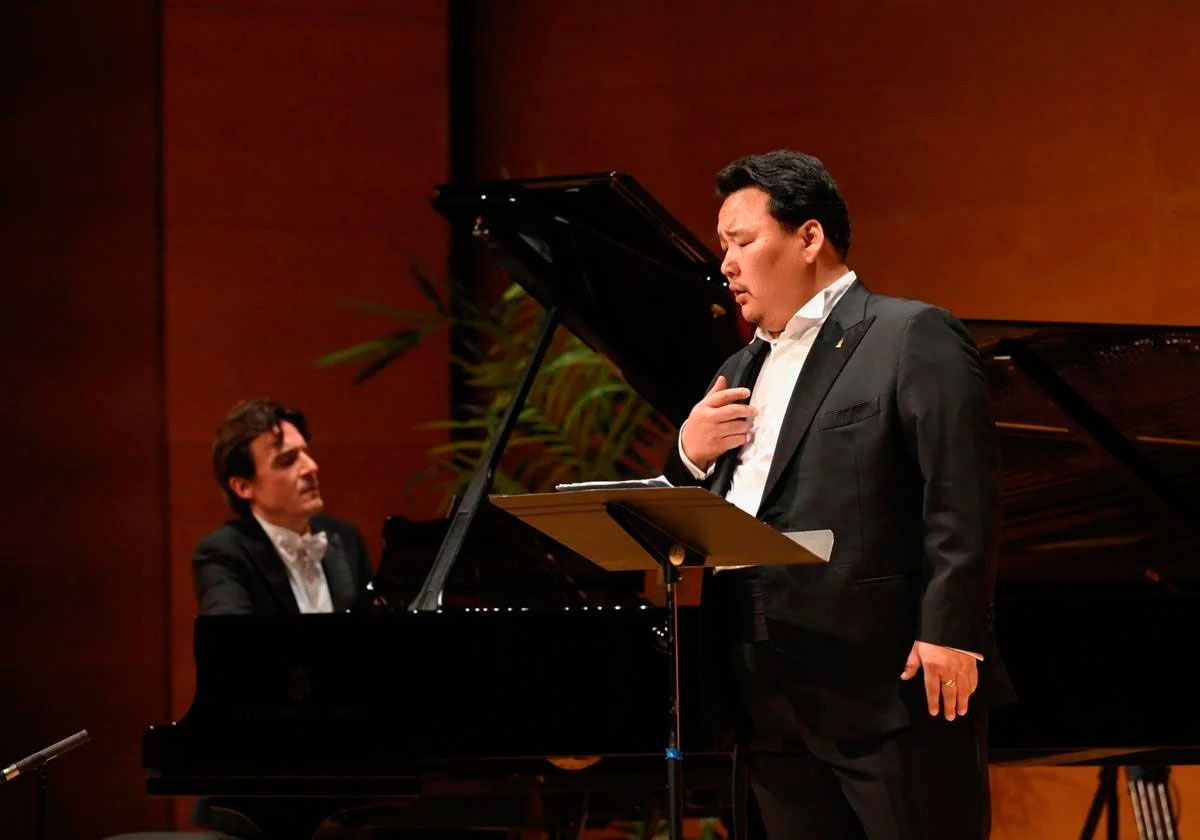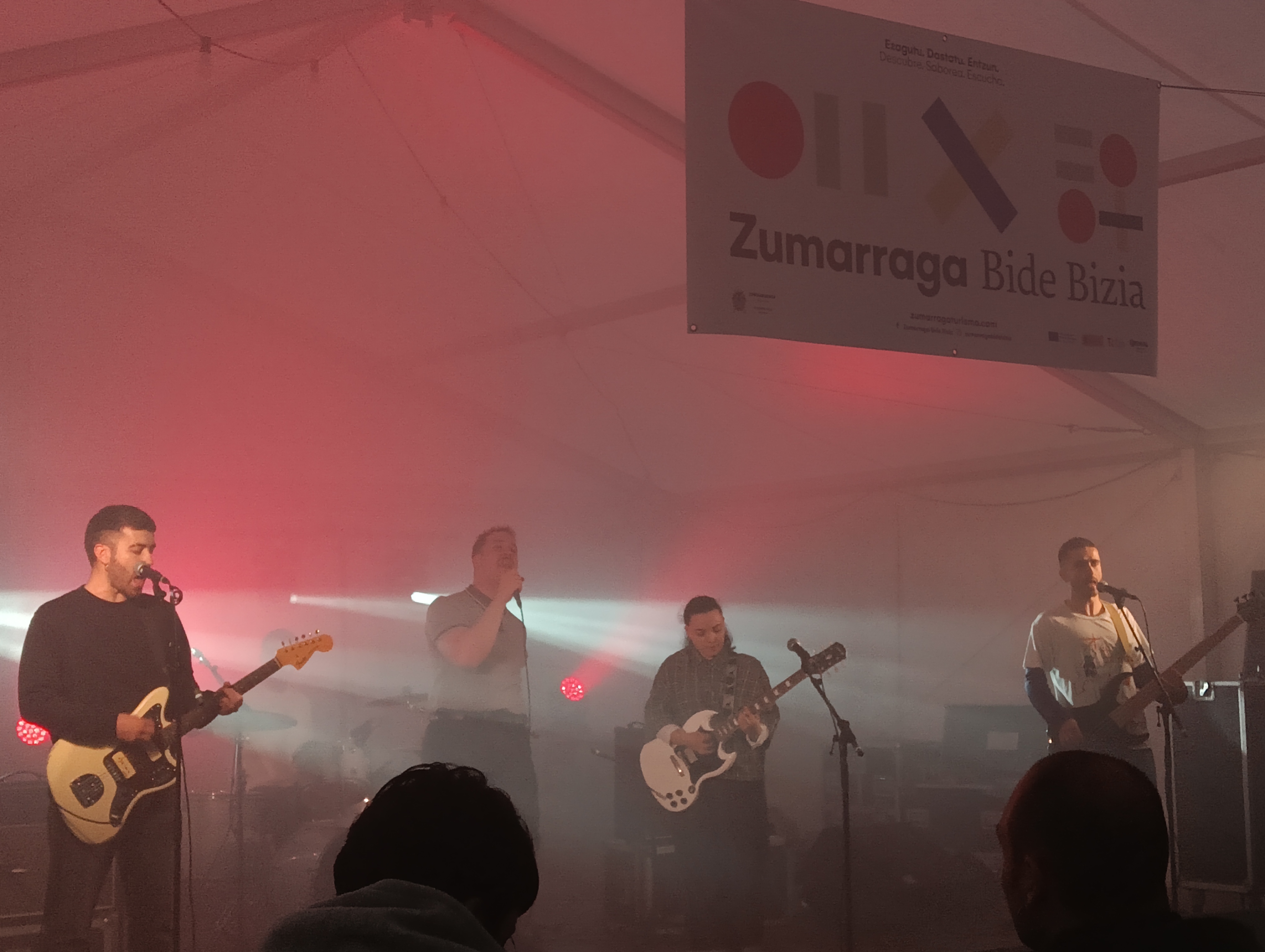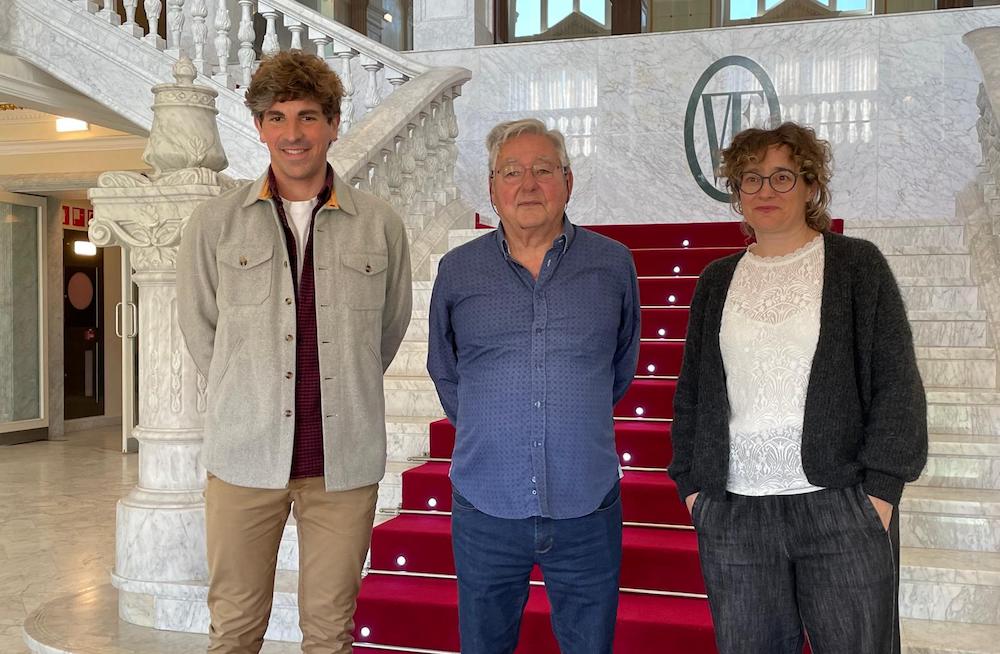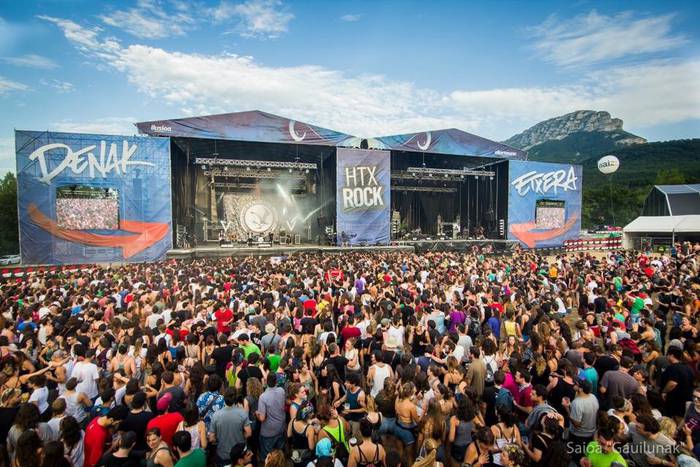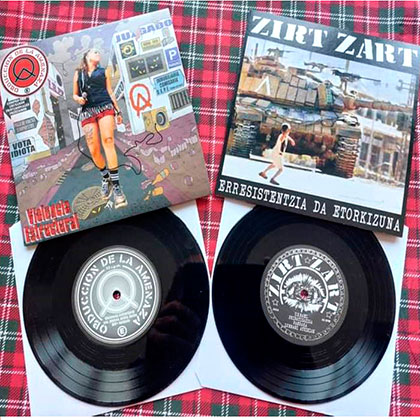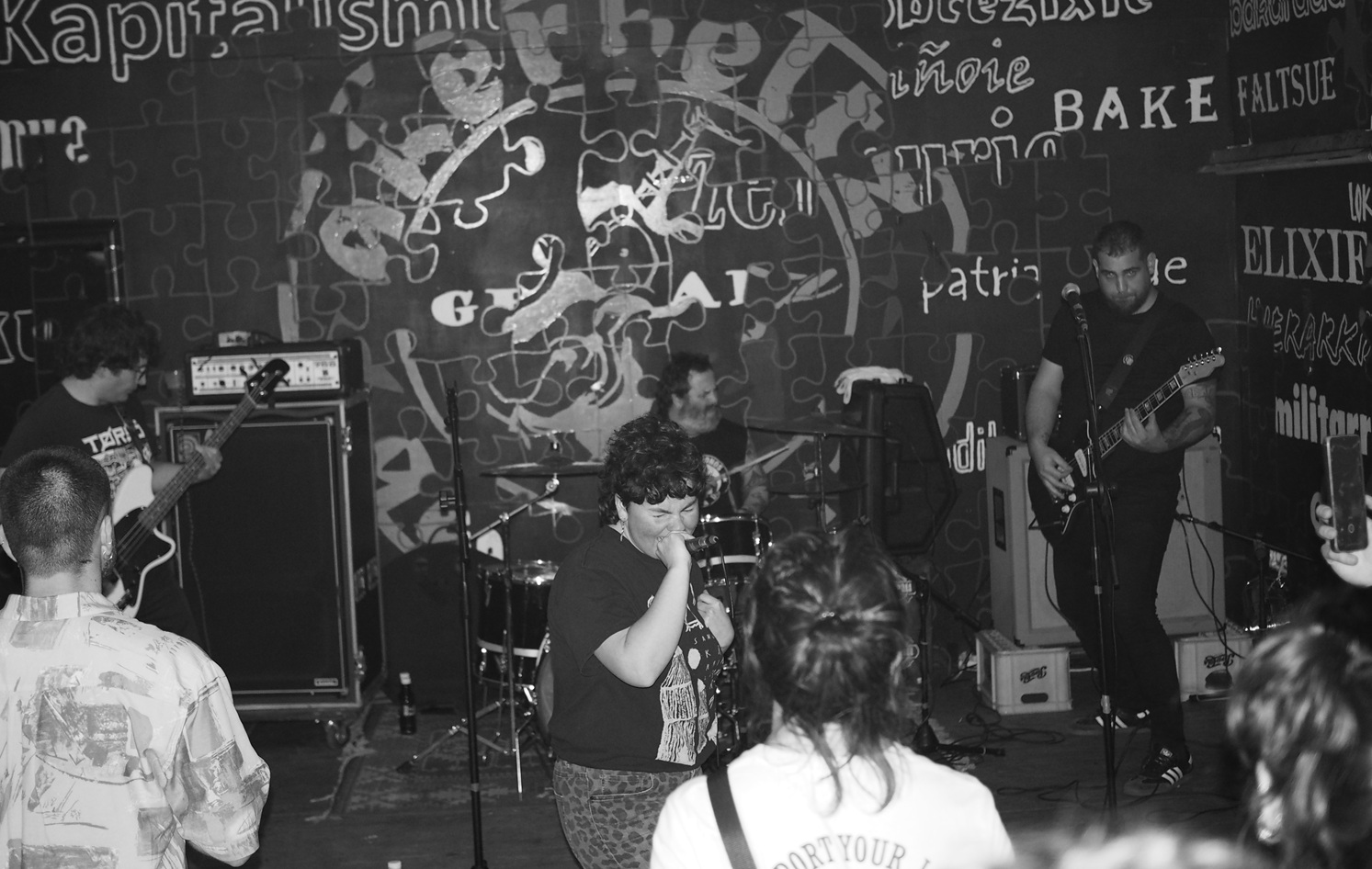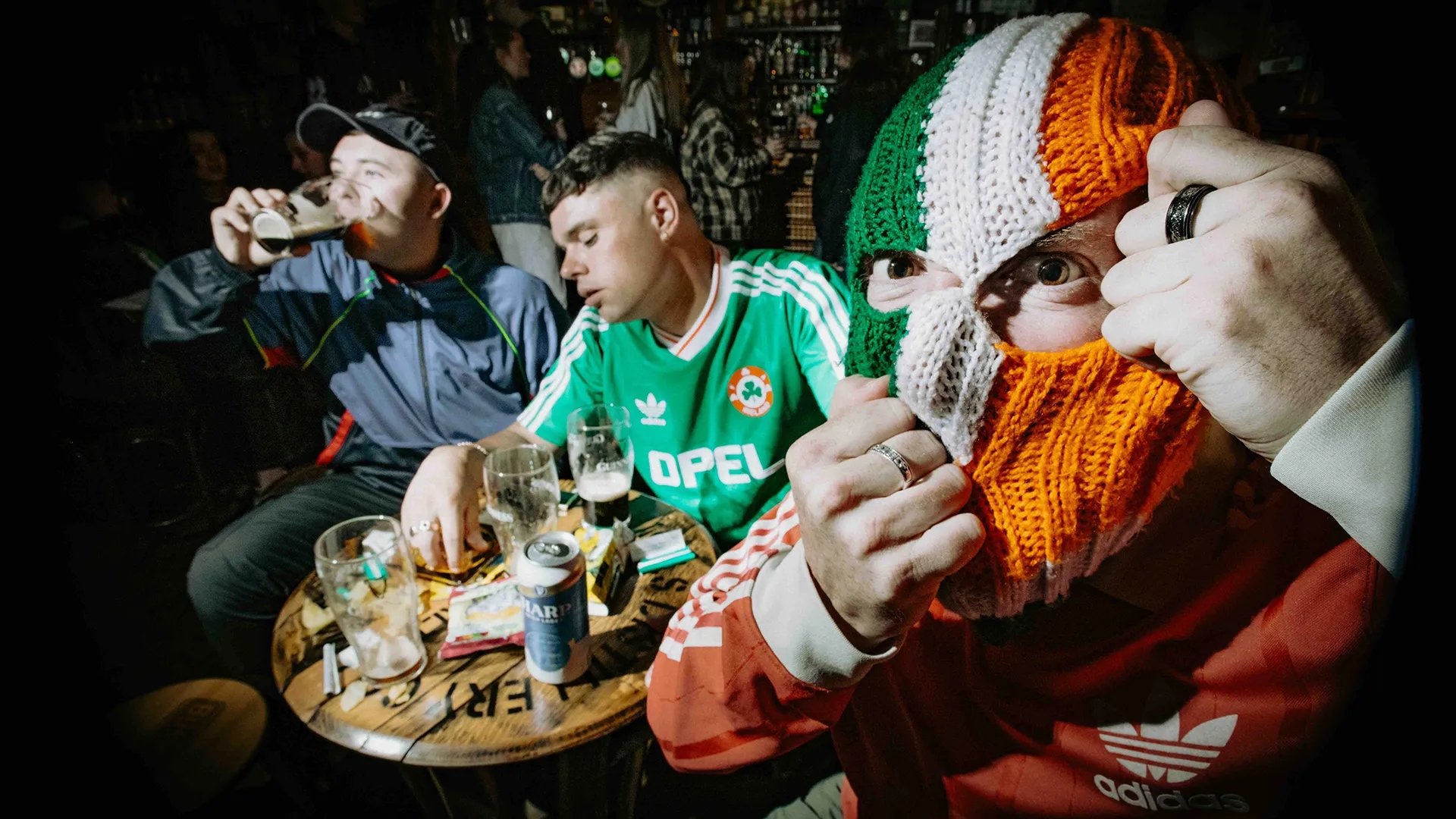"The mere fact of singing in Basque is political"
- Donostiarra Antton Valverde (Gros, 1943) is a musician with a long history in the world of music. He began to rise to the stage in the Franco era, in the 1970s, because, according to him, he wanted to do something for Euskal Herria. He has always had a foot in the art world, not only because of his musical trajectory, but also because of the artistic atmosphere that has always characterized his family. In particular, the painter Rosa Valverde (Donostia-San Sebastián, 1953-Azkaine, Lapurdi, 2015) was her sister and part of her work has recently been donated to the San Telmo museum through the San Telmo Museum Foundation.

How did the idea of donating part of your sister's work to the San Telmo Museum come about?
My sister Rosa worked a lot and left a lot of works after her death. We also didn't know exactly how many things I had. Among other things, some 300 drawings have appeared: a few in black and white, but most in color. But not all of them are made on canvas, but most of them are made on paper and some on cardboard. We were thinking about what we could do with those drawings and got in touch with the San Telmo Museum. We remembered one thing with them: we made a donation and they would take care of it and let us know a little bit about Rosa's work. The brothers stayed with about 100 drawings, and the others we left in San Telmo.
I guess at the museum they'll be better at taking dust than at home.
Yes, yes. In addition, the brothers already had many things of Rosa before, and in our children’s houses there are also his own works. That is why I believe that the San Telmo Museum is a perfect place to host both Rosa and many other artists.
In addition, the presentation of the donation coincided with the San Telmo exhibition of the art boxes of Rosa, which was exhibited until March 13. That is why Rosa’s work has been in all its glory in recent times. However, he did a lot more. Imagine that he started painting from very young and worked until his death.
Rosa’s painting is well known, but we have recently been able to learn about other artistic aspects of it: art boxes in the San Telmo museum and engraved in the Ekain gallery.
As my late father [Antonio Valverde] did, Rosa cultivated many disciplines: engravings, oils, boxes, etc.
Does Rosa’s work in Donostia have enough statements today?
I guess more and more. And not just in Donostia: He also did some things in Bilbao, and in Pamplona he did a great exhibition, in the Citadel. In the Artium of Vitoria-Gasteiz there is also some work of yours… I think it is increasingly known.

Your family has had a lot of contact with art, starting with your father.
My father was a well-known painter. And her two sisters were musicians. One of them, moreover, was known, Maria Josefa: He was an assistant to Jesus Guridi. Guridi was a professor of Organ at the Conservatory of Madrid and, at his death, he took his place.
On the other hand, our generation has always been linked to music and painting. My father tried to teach him painting, but he failed me and a brother of mine [laughing]. But with others, they don't. With Rosa he did not fail, of course, and with his younger brother, Javier, he also found himself well.
Did my father influence the artistic atmosphere of the house?
Yes, always. His father was a painter, but also a writer: he wrote many articles and a couple of books. On the other hand, I didn't play music, but I was a music enthusiast.
You decided to follow the path of music.
I think that was by itself, it is difficult to make such a decision. Look, we had a piano at home, and when I was 6 years old, I started playing. They saw that I had a certain ease of playing, and they put a teacher on me. Paquita Iribas, formerly well known in Donostia. I started with him and later I did piano studies.
What relationship did you have with your sister Rosa at the time?
The age difference was quite large between the two, and therefore the two brothers who follow me will have a closer relationship than I have with him: María José and Carlos. But well, the six brothers have always had a close relationship.
We all immersed ourselves in the artistic atmosphere of the house, some with more strength and others with less. I took the path of music, for example, and Rosa and Javier the path of painting and drawing. The rest has always been very fond of art, but he has also been an expert in art.
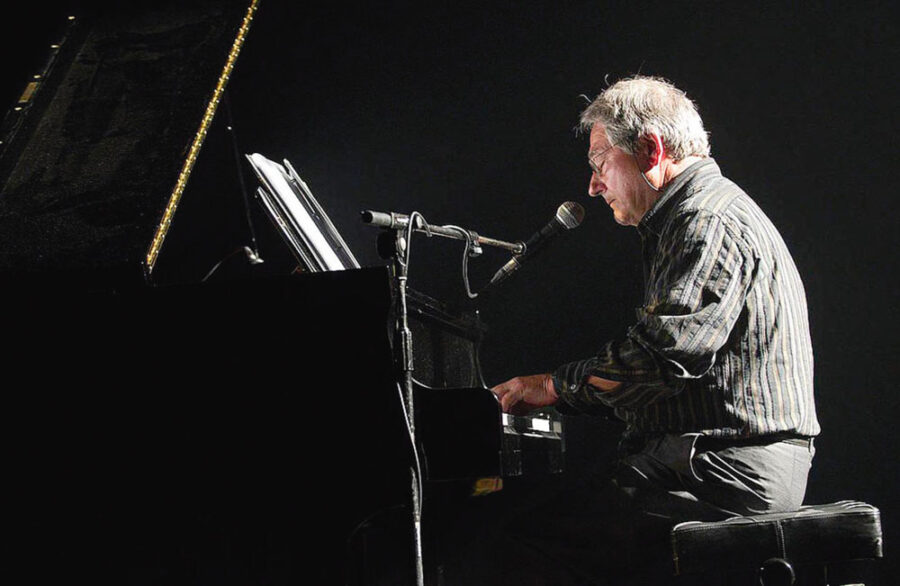
Rosa also studied with other great artists, as she was at the Free Expression Factory of José Antonio SISTIAGA and Esther Ferrer.
First, he learned at home, along with his father. However, his father sent him to the academy of Sistiaga and Ferrer, where he remained for several years. After the dissolution of the Academy, Rosa continued her path and finally went from being a student to a professor, opening her academy here, in Calle Manterola de San Sebastián.
When he went to live in Ascain [Lapurdi], he also had students there, who were going to practice and study at home. While living in Azkaine, he maintained his relationship with Sistiaga and other personalities of the art world: With Nestor Basterretxea, for example. In addition, our whole family had a great relationship with Jorge Oteiza.
With Oteiza? What's that like?
My father and Jorge were very good friends. Jorge lived in Irun back from America and used to come to our house of Oiartzun, in a scooter, accompanied by his wife Itziar. I worked in our house, making sculptures and things like that, together with my father.
Environment, therefore, absolutely artistic.
Yes, it is true. When we went to live on Zubieta Street, people of all kinds came to our house: writers, painters… They used to come to see the regatta, so I've been at home with famous people from the art world. For example, with Aita Donostia, with Ascensio Martiarena, with Eduardo Chillida, etc.
My father was related to them because he was an artist, but also because in the printing press of our family many things were printed by those artists: posters, books, etc. Many times, when it came to making corrections, they came to the printing press, and the relationship narrowed. In that printing press, I've seen Oteiza, Chillida, etc. In this environment, it was almost inevitable to end up as an artist.
In your career, you've worked mostly on musical poetry. What led you to it?
It was the 1970s, and it was a very special time in politics. I saw that there were a lot of people doing things for Euskal Herria, and what could I do? Well, sing. And through the song, make people known, especially poets. I started with that in 1970, and to this day. I am one of the few survivors of that generation; Xabier Lete, Mikel Laboa, Imanol… Benito [Lertxundi] and we stayed Antton [laughing]. There's another one left, I don't believe it.
You've always musicated each other's poems, right?
In 1997, I published a album, named Larninety-seven, because I didn't get any more headlines, and I musicated poets from some poets. The last song on the album, in Barberia, I wrote it. I didn't stay very happy and promised that I would never write a poem again. Better by taking each other's poems and musicating me, good poems, not like mine. Everyone has their virtues, and mine is not that. Not even painting. Not painting or literature. I create music, that's it.
In the 1970s, when you started, Franco was still alive. What was Basque music like at the time?
We've talked a lot about it, but yet young people don't know the environment. On the one hand, it was very hard, but on the other hand, we felt that our work had a recognition. There were many festivals, perhaps twenty every weekend in the towns of Euskal Herria. I was going to see a lot of people, and all the actions certainly had great political significance.
Then things changed, and if you now ask me why I sing today, I would tell you that I sing for inertia, for not being silent [laughing]. The sociopolitical work of that time was there, and now there's the artist's work. I enjoy it, and that's why I'm still there.
Is it not now necessary to do that political work?
At least, not so much. But well, actually, singing in Euskera is just political.
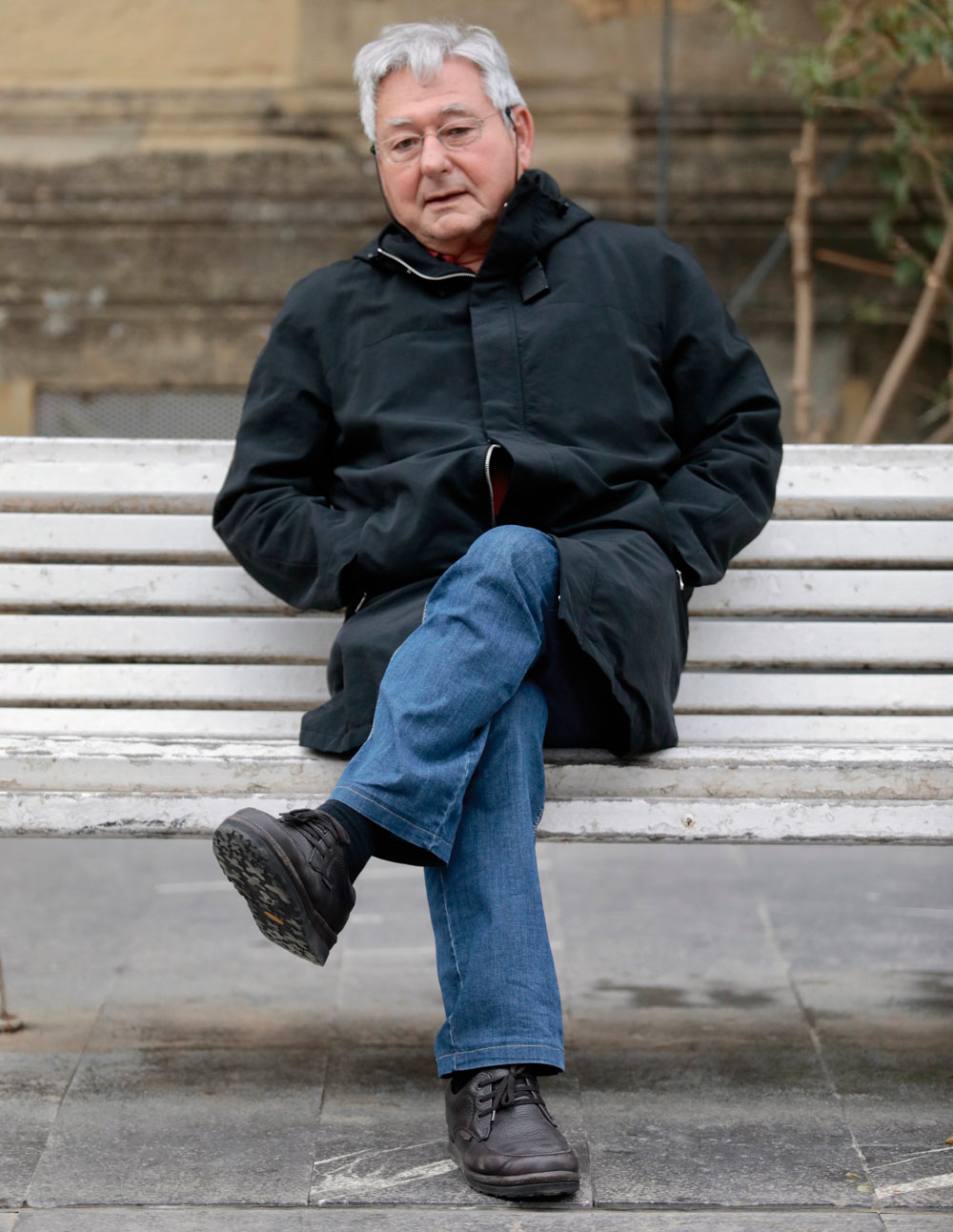
Was it legal to sing in Basque at that time?
Legal yes, but we had to overcome a lot of obstacles. From the point of view of censorship, we had to measure what we sang and sometimes it was not easy to get permission to sing. It would be a good thing if we did not listen to censorship, otherwise we would never have been able to sing it.
The first years of Franco's death were also very complicated.
People were angry and the performances were very strange. At any time, people were starting to shout slogans like ‘Gora Euskadi’. The festivals were pretty special, and they didn't like it much. On the other hand, at that time, it was nothing strange that any ETA day killed a police officer, or that the police killed one of ETA.
Everything was very confused and that's why Xabier [Lete] and I made a decision: stop. And we were out of singing for a few years. I think Pantxoa and Peio decided the same thing back then. I don't know how many years of standing we did, I don't remember, but we stood up, because we couldn't make a normal festival: we had to stop at any time, and so on. Then, Xabier started singing again, and I also did the same.
What did you do in those years when you scaled up?
Throughout my life, on the one hand I have worked on the song, but on the other hand my job has been to work in the family business, in the printing press I mentioned earlier. In those years of standing, I worked there until we started singing again.
On the other hand, although I was playing piano since I was young, I didn't have finished higher education, so when we stopped singing, I decided I had to finish my piano studies. So I did. But before I finished, I was forced into the Conservatory to do Harmony and other lessons of this kind. To do this, I started studying with Francisco Escudero. I had four years of Harmony studies and I healed all four. However, I was very comfortable with the teacher and two other students, and in the end we did five years of the Composition studies. I mean, I was busy.
How was the return to the scenes?
Xabier got sick, but in a not too bad moment, I was called to wonder if I would sing to the Durango Fair. I thought well, and instead of singing, I just said, "Will I tell Xabier Lete to come and sing?" They said yes, of course, and I told Xabier. He had some doubts, because he wasn't quite strong yet, but in the end he told me yes. That action was anthological, not on my part, but on Javier's. We also have the collaboration of Karlos Giménez, which was very important in our actions. It was in the 1990's or 1991's, and from there we went back to singing. Especially with Xabier Lete, I always got really good.
He has published several albums, but it is significant that many years have passed from one album to another.
That is laziness [laughing]. Things are like this, everyone has their rhythm. When I pulled out ninety-seven records, for example, ten years passed from the previous record. Taking a record every ten years is not a good brand, but good.
When I made the ninety-seven album, I took all the songs I'd done so far, thinking that would be my last album. In the end, it didn't, and I've done a lot more. Twelve songs of love, three DVDs of Eleak and Hitzak hots and one NIGHT. The shadow of the disk absence.
Before ‘Eighty-seven’ you published a album dedicated to Lauaxeta. Do you particularly like Lauaxeta?
That has its story. Joxe Antonio Artze made a magnificent poetry book by Isturitz in Tolosa, and for that book he had a cover. Many characters from Basque history had to appear on this cover: politicians, artists, etc. It was a collage, but it was hard to print, and so it came to our printing press. On this pretext I spoke to him and I first learned about Lauaxeta, until then I did not know him. I loved it.
A few years later, they picked up all Lauaxeta's poems in a book, and I got it at home, you don't know how broken it is, I used it so many times… So, I thought Lauaxeta deserved a monographic album. I wanted to give an overview of Lauxeta with the album. I think with this album I made a contribution to make known Lauaxeta. I am proud of that. Otherwise I would have been known, but I had helped something.
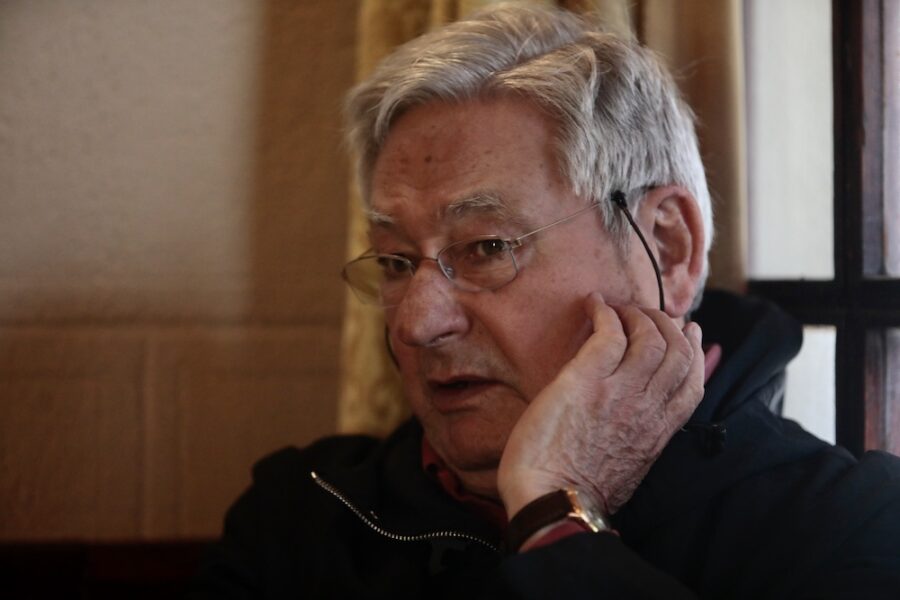
Your latest album released in 2020: ‘Night. Shadow of absence’.
Here, for the first time, I included four songs from another important poet: De Harkaitz Cano.
Are you offering live performances?
Last year, I did five or six performances to present the album, and I was pretty happy. For me, it's a lot. From now on we will see if something goes well and if not, also well.
Do you want to publish another album in the short term?
I was stunned by the last album [laughing]. I'm always with something, and maybe I can get something out of a moment, but for the moment I'm not. In addition, years are also going on.
We will have to wait another ten years.
So, it won't touch me [laugh]!
You could do some song in tribute to Rosa, for example.
He would like to do so, but I would not put the letter to him. So I would have to find someone who has something written about him, or who does it on behalf of him. I would like to see it in ten years' time.
BRN + Neighborhood and Sain Mountain + Odei + Monsieur le crepe and Muxker
What: The harvest party.
When: May 2nd.
In which: In the Bilborock Room.
---------------------------------------------------------
The seeds sown need water, light and time to germinate. Nature has... [+]
Amartuvshin Enkhbat baritonoa
Pianoan: Stefano Salvatori.
Antolatzailea: OLBE.
Zer: Verdi, Mascagni, Leoncavallo eta Giordanoren operen ariak.
Non: Bilboko Euskalduna Jauregian.
Noiz: martxoaren 29an.
Aramu + AimarZ
When: April 26.
In which: The Zumarraga Open Field.
---------------------------------------------------------
The website of the City Council says: "The tourist brand Viva Viva and the festival of the same name are designed to show the world the soul of... [+]
Transparent Beings
When: April 20th.
In which: In the Plaza of the Castle of Pamplona.
-----------------------------------------------
The concert is only half an hour away in the Plaza del Castillo de Pamplona; but it is still half empty, because it is raining. Whether... [+]
Obduction of Amenaza / Zirt Zart (Split-ep)
2024
---------------------------------------------------
The musical panorama is gigantic, impassable. Among them there are a few large groups that absorb all the foci; many others that are dedicated to the pursuit of it, and... [+]
Aposapo + Mäte + Daño Dolor
When: April 5th.
In which: In the Youth Center of Markina-Xemein.
---------------------------------------------------------
I’ve made my way to the cheese house with the shopping cart full of vegetables, and we’ve spent the evening cutting... [+]
Poliorkêtês
Kerobia
Autoekoiztua, 2025
--------------------------------------------------------
Azken aldian, lerrootan asko nabil hausnartzen musikak izan beharko lukeen “misio historikoaz” eta abarrez. Eta, nolabait, zer egin beharko lukeen... [+]
On March 7, the 150th anniversary of the birth of Maurice Ravel, the best Basque composer of all time. And in LA LUZ a tribute was paid to this composer, recalling the influence of the famous Bolero on the collective imagination.
By chance, Deutsche Grammophon has just released... [+]



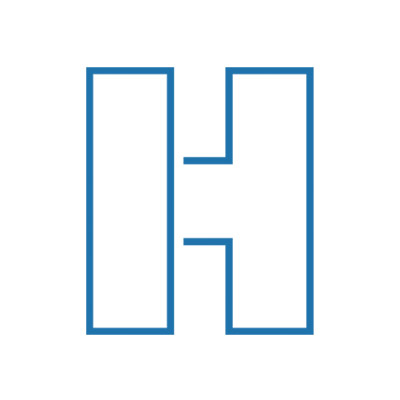






.jpg)

